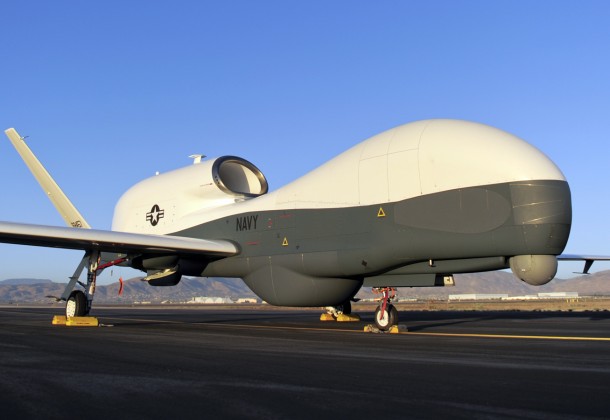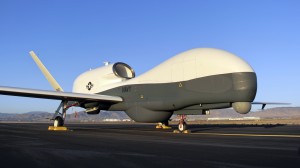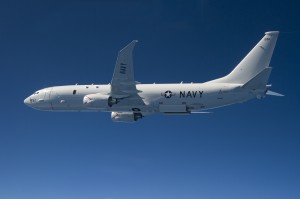Crash Did Not Stall BAMS Program, Software Did

By Jay Friess
Editor

MQ-4C Triton
The Pentagon has released its FY2012 Director, Operational Test and Evaluation Report to the public, summarizing the state of the military’s developmental projects, including those being tested at Naval Air Station Patuxent River.
When a Global Hawk unmanned aircraft stationed at Naval Air Station Patuxent River crashed on the Eastern Shore in June of last year, the incident did not affect the Navy’s Broad Area Maritime Surveillance program, according to a new Pentagon report.
The Northrop Grumman Global Hawk was being used as a test platform for the Navy’s MQ-4C Triton Broad Area Maritime Surveillance aircraft, also manufactured by Northrop.
However, the program has experienced setbacks resulting from software instability in flight control computers and ground testing delays with the first Triton model. The setbacks have delayed developmental flight testing from its scheduled May 2012 start date until this month.
The June 2012 crash, according to the Director of Operational Test and Evaluation report, “did not affect the MQ-4C Triton development and test program.” The crash, according to the Pentagon, was the result of a faulty tail actuator.
However, the computer software delays are impacting the program. The DOT&E report states: “Resulting test schedule revisions compress developmental and operational test events and significantly increase schedule risk prior to the planned operational assessment in June 2013 and the Milestone C decision in October 2013.”
The program also saw delays with ground testing the first Triton model.
“Following delivery of the first flight test air vehicle in June 2012, acceptance and ground testing proceeded more slowly than expected,” the report states. “Additional ground test delays encountered in early FY13 may result in further delays in the flight test program.”
The report urges the BAMS program to finish its compressed testing schedule on time. “Given the reductions in developmental testing that are occurring, the operational assessment will be a key, critical source of information on the system’s performance prior to the production decision,” it states.

P-8A Poseidon (U.S. Navy photo)
The Triton is a key part of the Navy’s new maritime patrol mission, which envisions replacing legacy P-3 Orion propeller aircraft with higher-flying P-8A Poseidon jets controlling multiple Triton aircraft.
The Poseidon program is facing problems of its own, according to the report.
“The Navy’s decision to waive P-8A wide-area acoustic search requirements for [Initial Operational Testing and Evaluation] and defer integration of a multi-static active acoustic capability until at least FY14 will limit [Anti-Submarine Warfare] mission effectiveness in the near-term,” the report states. “In order to achieve full ASW mission capability on the P-8A aircraft, the Navy will have to complete future integration of the Multi-Static Active Coherent broad area acoustic system on the aircraft.”
The report notes that the Poseidon’s airframe and aircraft subsystems have matured, but warned, “…Main tank fuel overheating during ground and low-level flight will limit ASW operations in hot weather environments.”
The Poseidon was supposed to have a system on board that replaced empty space in the fuel tanks with nitrogen in order to reduce the possibility of a fuel explosion. But the report states: “The Navy did not release the P-8A On-Board Inert Gas Generating System (OBIGGS) for operational testing due to serious system design deficiencies discovered during developmental testing. The program is currently evaluating design changes and will conduct further developmental testing in late FY12 and early FY13.”




















